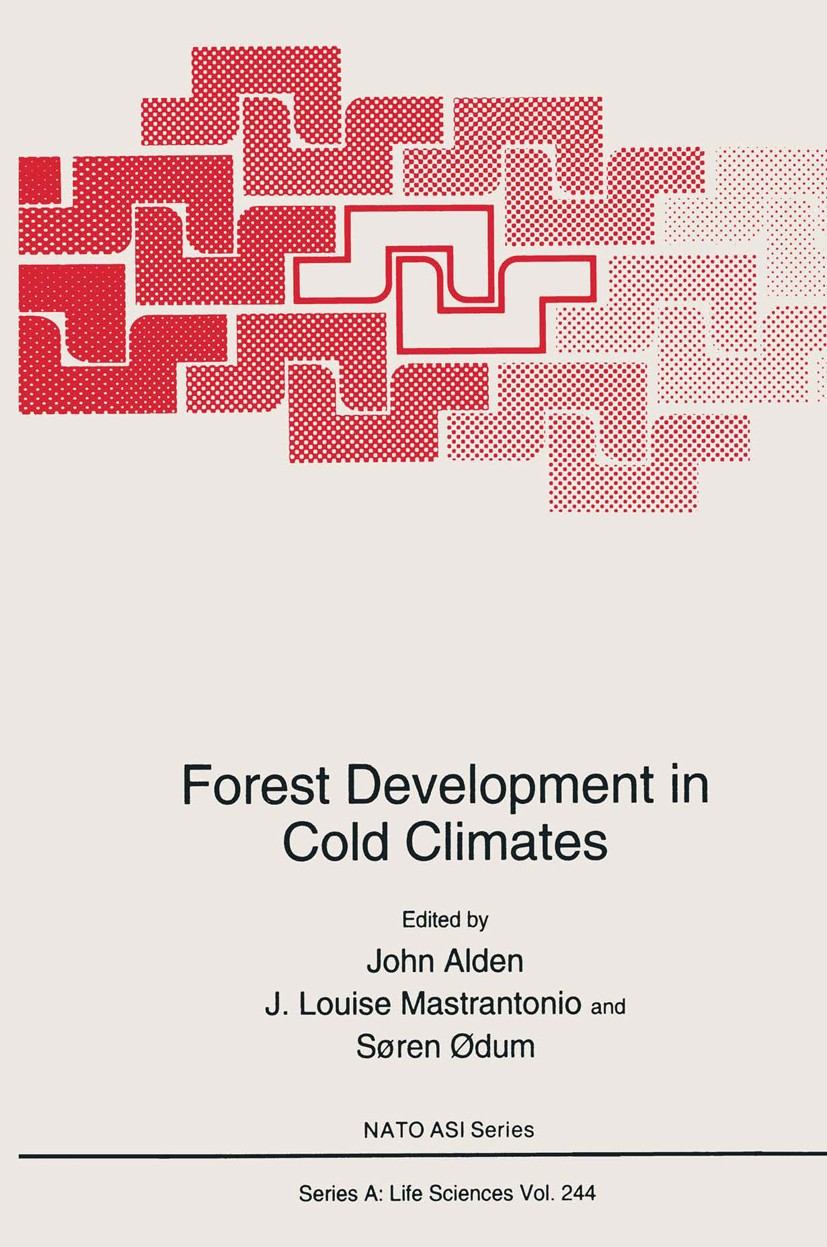| 书目名称 | Forest Development in Cold Climates | | 编辑 | John N. Alden,J. Louise Mastrantonio,Søren Ødum | | 视频video | http://file.papertrans.cn/346/345502/345502.mp4 | | 丛书名称 | NATO Science Series A: | | 图书封面 |  | | 描述 | As forests decline in temperate and tropical climates, highly-developed countries and those striving for greater economic and social benefits are beginning to utilize marginal forests of high-latitude and mountainous regions for resources to satisfy human needs. The benefits of marginal forests range from purely aesthetic to providing resources for producing many goods and services demanded by a growing world population. Increased demands for forest resources and amenities and recent warming of high latitude climates have generated interest in reforestation and afforestation of marginal habitats in cold regions. Afforestation of treeless landscapes improves the environment for human habitation and provides for land use and economic prosperity. Trees are frequently planted in cold climates to rehabilitate denuded sites, for the amenity of homes and villages, and for wind shelter, recreation, agroforestry, and industrial uses. In addition, forests in cold climates reduce the albedo of the earth‘s surface in winter, and in summer they are small but significant long-lived sinks for atmospheric carbon dioxide. Finally, growth and reproductive success of forests at their geographic limi | | 出版日期 | Book 1993 | | 关键词 | development; environment; forest; physiology; temperature; Tree Biology | | 版次 | 1 | | doi | https://doi.org/10.1007/978-1-4899-1600-6 | | isbn_softcover | 978-1-4899-1602-0 | | isbn_ebook | 978-1-4899-1600-6 | | copyright | Springer Science+Business Media New York 1993 |
The information of publication is updating

|
|
 |Archiver|手机版|小黑屋|
派博传思国际
( 京公网安备110108008328)
GMT+8, 2025-11-14 10:09
|Archiver|手机版|小黑屋|
派博传思国际
( 京公网安备110108008328)
GMT+8, 2025-11-14 10:09


